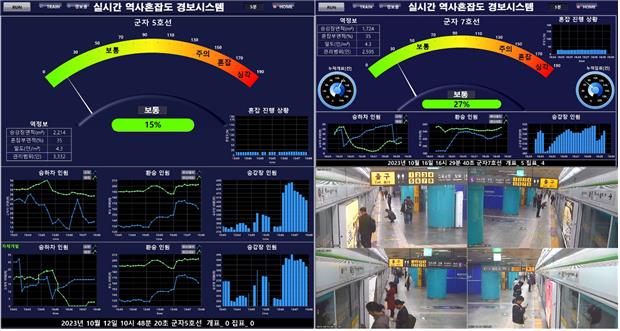
These images, provided by the interior ministry, show renderings from an artificial intelligence-based crowd monitoring system applied to a subway station in Seoul. (Yonhap)
SEOUL, Nov. 2 (Korea Bizwire) – An artificial intelligence-based congestion prediction system will go into pilot service on Seoul’s subway networks this month to monitor the risks of overcrowding, the interior ministry said Thursday.
On a project that commenced in June, the ministry’s Integrated Data Analysis Center has developed the AI-based prediction model based on passenger data from subway lines in Seoul and the Gimpo Goldline, connecting Gimpo International Airport to suburban towns.
Starting this month, the system will go into pilot service across Seoul’s subway networks to ascertain real-time congestion levels on subway platforms. If unexpected spikes in the congestion level are detected, the system will automatically disseminate the information to authorities, enabling them to take necessary crowd control actions.
Under the system, congestion levels on each subway platform will be categorized into four levels: normal, caution, congested and serious, where congestion reaches 170 percent of the accommodation capacity.
Following the pilot service, which will be conducted for the rest of the year, the interior ministry plans to expand the model to the broader subway networks in the capital area, as well as the subway lines in four major cities: Busan, Daegu, Gwangju and Daejeon, officials said.
(Yonhap)







I didn’t realize there was a lot of crowing going on. Caw caw? Or “까~까~”?
Just yanking your chain. Obviously a typo for “crowding”.
Thanks for checking with the typo. ^^;;